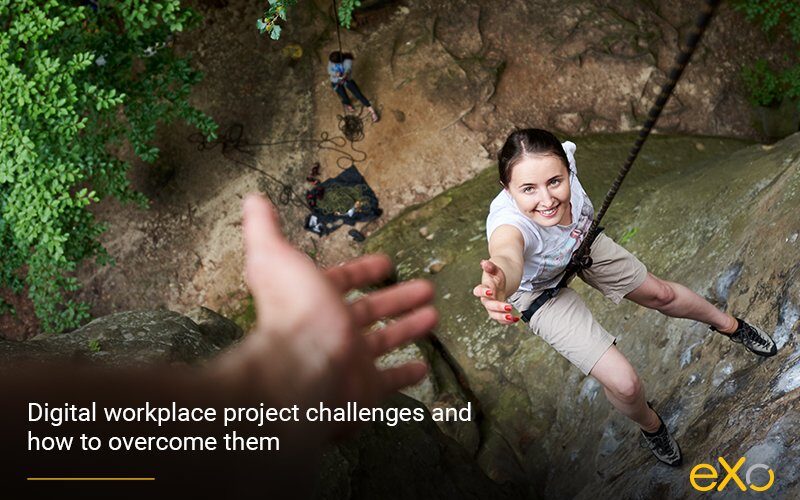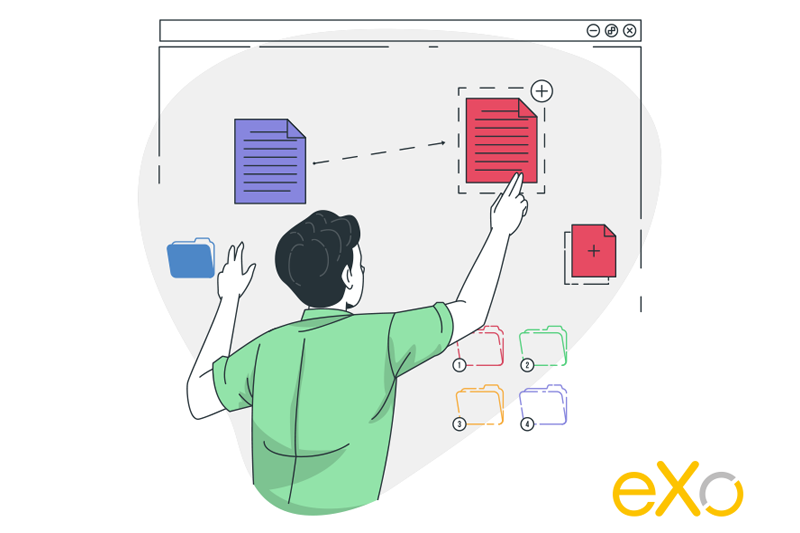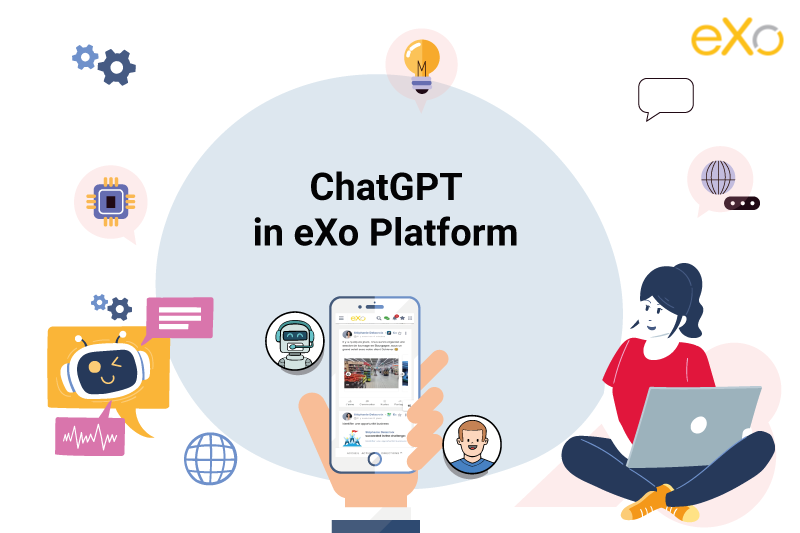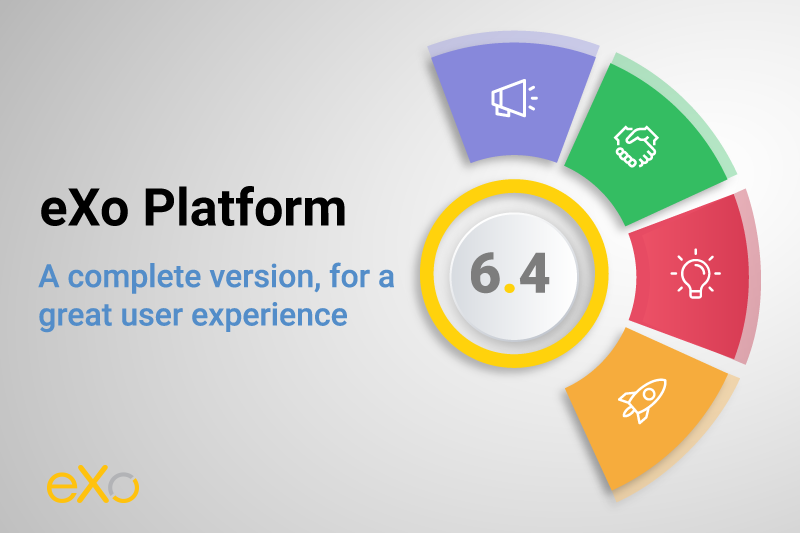- Fares Laroui
- November 25, 2020
Digital workplace project challenges and how to overcome them
The success rate of IT projects in general and intranet digital workplace projects in particular is relatively low. In fact, according to Simplrr, 90% of digital workplace projects fail within three years of their launch. This is despite teams’ best efforts to follow the same approach as with other IT projects by trying to identify the objectives and scope, set clear KPIs, track progress and more.
This goes to show that digital workplace projects have a unique set of challenges and teams involved might need to concentrate their efforts more on understanding employees’ needs rather than only focusing on the software. In this blog post, we will first identify these challenges and provide a set of best practices for how to overcome them.

Content
Challenge #1: Develop a digital workplace governance model
Digital workplace governance refers to the collection of processes, roles, responsibilities and rules that can shape the digital workplace and guarantee its long term success. It focuses mainly on the what, who and how of the project as a whole and the decisions that have to be made along the way. Failure to determine the scope of the project often leads to unclear processes and adoption of a costly solution that doesn’t meet users’ expectations.
Let’s start with the “who”. Businesses need to designate a team that will be responsible for planning, owning and running the digital workplace. Usually, a typical project team groups decision makers from multiple departments mainly IT, communications, HR and other business functions. The more diverse the team, the more able it is to effectively answer the next two important questions: the “what” and the “how”.
The foundation of any digital workplace initiative is to understand what users need and determine the series of decisions to take in order to satisfy those needs. Examples of decisions prior to launching a digital workplace include whether to buy or build a solution in-house, choose between on premise or cloud deployment, identify the desired outcomes and which features to include, among others.
The next step is centered on how to achieve the project objectives. Here, the project team works on establishing clear processes, policies and guidelines to first choose and then implement and manage the digital workplace. In order to make informed decisions, the team needs to gather as much information as possible through in-depth market research, product demonstrations, surveys and other means. This way they can find the right fit in terms of software but also in terms of the additional services (training, support, change management, content management etc).
Challenge #2: Manage change
Change management is an important process that can help the project team prepare target users for new ways of communicating and working in order to increase the likelihood of wide adoption. The common misunderstanding though is that change management has to be conducted only prior to launch. In fact that’s only the start. Managing change is a process that may last for the entire project.
At first, the project team has to communicate the change to users and build momentum. For that, they can use a variety of means such as written content, an engaging launch campaign and a helping hand from high executives with influence within the organisation.
The next step is to develop a tailored training programme with online courses, tutorials and how-to guides to help potential users become familiar with the platform and its benefits and learn how to get started. This is crucial as it helps the team to create a group of early adopters (maybe champions in the latter stages) and get their initial feedback. The feedback can be used to further adapt the change management initiatives to the evolving behaviour of users.
Challenge #3: Low adoption rates
Probably among the most common challenges facing businesses is low adoption of their new digital workplace. Low adoption rates come as no surprise for project teams who didn’t do their homework properly.
As mentioned earlier, the key to getting a digital workplace project off the ground is to understand users’ needs and act accordingly. If the solution doesn’t meet the functional requirements and bring added value, then employees will decide against even giving it a chance.
Users will instead rely on other applications (which might not be approved by the IT department) to go about their day, leaving the digital workplace deserted which may in turn lead to reduced productivity and severe financial losses.
For example, if the digital workplace is supposed to act as a centralised digital hub where multiple teams can come together to communicate, collaborate and get things done, it is important to first study how each team operates day to day, what they are already using and what they expect. With these important pieces of information, the project team can build a tailored platform that is user friendly, easy to navigate and contains the typeof content that users need.
Challenge #4: Find the perfect balance between UX and UI
A digital workplace with a complex user experience (UX) and design (UI) often makes it hard for users to navigate through the platform, learn how to use it and find what they are looking for, leading to confusion, frustration and eventually disengagement. The key to overcome this challenge is to balance UX and UI. In terms of user experience, emphasis should be placed on how users interact with the platform. A good digital workplace UX assists users to achieve their goals and minimise mistakes through organised and easily reachable content, instant feedback and easy navigation. As for UI, the focus should be placed on making the platform visually appealing and personalisable based on individual user preferences or the organisation’s brand. Additionally, UI elements such as input controls (buttons, content fields etc) , navigation (icons, search fields etc) and information (dialogue boxes, tooltips etc) have to be clear and within easy reach.
Challenge #5: A drop off in engagement over time
As is the case with any product launch, users might be intrigued to use and discover it mainly out of curiosity and the same applies for digital workplace solutions. However, maintaining the same level of engagement over time is not an easy feat. More often than not, project teams have a hard time keeping users engaged in the long run. This can be attributed to a lack of informative and engaging content.
When it comes to engaging internal communities, the role of targeted content is often overlooked, leaving users with limited to no information that they can interact with.
To tackle this challenge, the project team needs to first measure engagement metrics to identify areas for improvement and understand how employees are using the platform (number of posts per employee, shared documents, collaborative projects initiated, etc), and how they interact with the shared content via likes, comments and shares. Once the metrics are collected, the designated community managers can prepare a content plan containing targeted content that aims to inform and engage communities via features such as news and microblogs and starting conversations within dedicated collaborative spaces.
To get a digital workplace project off to a good start and guarantee its long term success, it is crucial to keep in mind employees’ needs throughout various stages and to adapt and evolve the solution accordingly. If you are interested in learning more about how to get started with digital workplace projects, make sure to read this collection of blog posts about the topic and don’t forget to take the blog tour.

FREE WHITE PAPER
Types of Digital workplace solutions
The modern workplace has evolved significantly in recent years, with advancements in technology, the growing number of tools …
FAQs
What is a digital workplace?
A digital workplace is a next generation of intranet solutions or intranet 2.0 that is based on three pillars: communication, collaboration and information. In a way this definition is true but it doesn’t cover the whole spectrum of the term. Here are some definitions of digital workplace:
- An evolution of the intranet
- A user centric digital experience
What are the common digital workplace challenges?
Here are 5 Challenges to a Digital Workplace and How to Overcome Them:
- Challenge #1: Develop a digital workplace governance model
- Challenge #2: Manage change
- Challenge #3: Low adoption rates
- Challenge #4: Find the perfect balance between UX and UI
- Challenge #5: A drop off in engagement over time
What is a digital workplace strategy?
- Understand users’ needs
- Identify your digital workplace ambassadors
- Build the digital workplace brand
- Training and onboarding
- Plan the big day
➝ Find out What You Need to Build a Great Digital Workplace Strategy
How do you secure your Digital Workplace?
Here are some best practices to minimise security threats in digital workplaces:
- Develop a cybersecurity policy
- Continuous training
- Control access to information
- Be sure to update regularly
- Tags: Digital workplace, Collaboration
5/5 - (123 votes)
I am a product marketing specialist at eXo. My role is to assist marketing and sales teams in their operations and present our digital workplace solution to the world. I mainly blog about the latest tech trends, digital transformation, internal communication and how to navigate through eXo Platform.
Related posts
- All
- eXo
- Digital workplace
- Open source
- Internal communication
- Collaboration
- News
- intranet
- Future of work
- workplace
- Knowledge management
- Employee engagement
- Employee experience
- Employee productivity
- onboarding
- Employee recognition
- Change management
- Cartoon
- Digital transformation
- Infographic
- Remote work
- Sneak Peek
- Solutions
- Thought leadership
- Tips & Tricks
- Tutorial
- Uncategorized
Leave a Reply
( Your e-mail address will not be published)
Connexion
0 Comments
Commentaires en ligne
Afficher tous les commentaires


